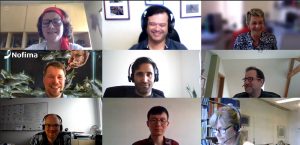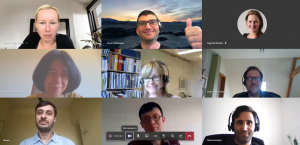Making new ingredients and products from marine sources

Over the coming decades, the world will witness increased competition for limited and finite natural resources. Bio-waste is estimated at up to 138 million tons per year in the EU, of which up to 40% goes to landfill. This includes large amounts of by-catches from the fisheries.
Other sources of poorly utilized marine biomass include cleaner fish used in aquaculture and several invasive marine species, which are currently causing devastation to local ecosystems. This represents not only problems, but also opportunities for innovative actions in the EU to better develop targeted uses of what is currently wasted or disturbing our ecosystems.
What can we do?
The BlueCC project, which kicked kicked off in June 2020, aims to take underutilised species such as invasive marine species, by-catch and cleaner fish from the aquaculture industry to develop new eco-friendly marine ingredients and products in a market acceptance approach.
The focus is on sustainably exploiting chitin and collagen produced by invasive crabs, jellyfish, starfish and cleaner fish and demonstrate prototype products containing these polymers and/or their hydrolysates.
To succeed with product development of research-intense products such as chitin/chitosan and collagen, we will apply a strong emphasis on market needs and insights throughout the project.

How will it be done?
BlueCC will be carried out by an interdisciplinary team and is divided into six main work packages addressing market driven concept development, sustainable chitin/chitosan and collagen demonstrators, characterization of the novel marine ingredients, including in vitro documentation of e.g. anti-inflammatory and antimicrobial effects, and finally and commercialization feasibility.
Altogether, BlueCC will in a sustainable and efficient manner exploit underutilized marine raw materials, from laboratory to prototype demonstration, to reach collagen- and chitin/chitosan-based bioactive demonstrators with potential commercial uses reaching the Technology Readiness Level 7.
Kick-off
The project kicked off on 18 June 2020. Due to the coronavirus pandemic, the kick-off meeting was held digitally on Teams. Below are screenshots from the first kick-off meeting.



